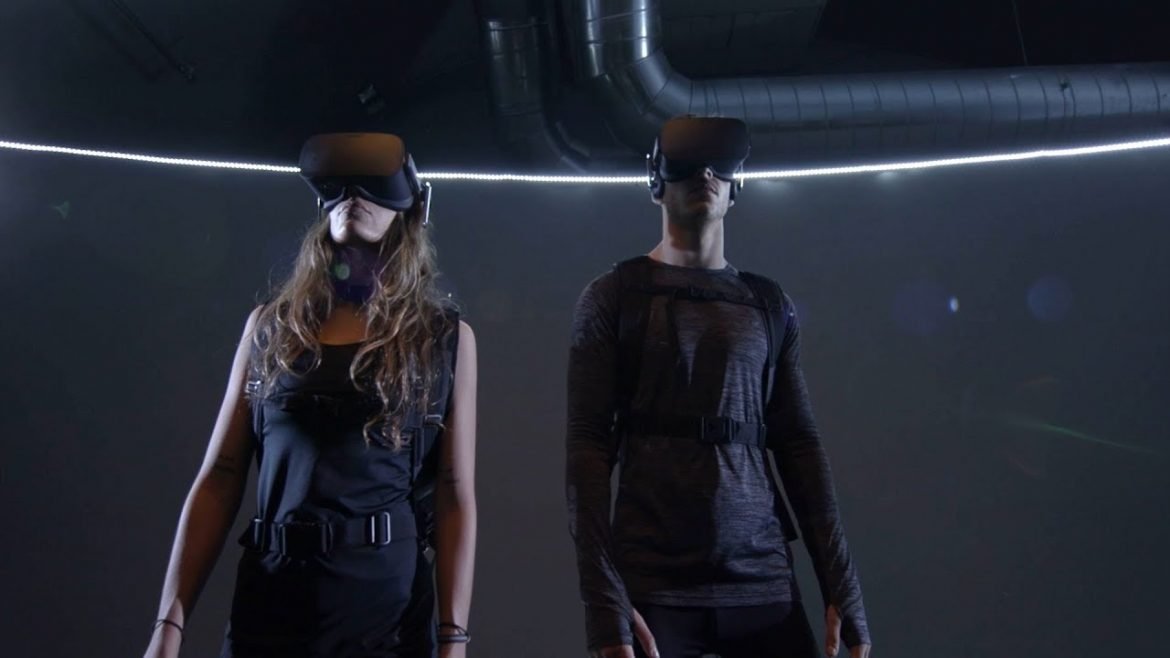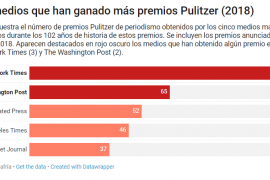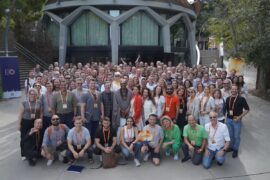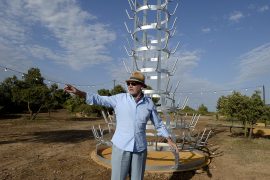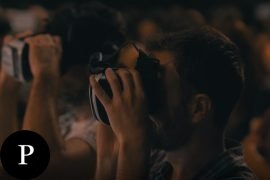[dropcap letter=”F”]
or many, climate change and its impact on the lives of our planet and the ones of those who inhabit it is the big issue and the greatest challenged faced by humankind in the 21st century. And many are the questions we need to ask ourselves: What impact will it have on our lives? What practical consequences will it have? Are such changes irreversible? What can we do, our daily lives, to reduce the effects of climate change, which incidentally have already been felt in recent years?
“The Zone of Hope” is a groundbreaking exposition in Europe that can be visited –or, better said, experienced– at the very center of Barcelona until May 2019. The exposition manages to convey, masterfully and originally, the likely impact of climate change on our lives.
Thanks to a novel technology called “immersive extreme”, the visitor can enjoy a first-hand experience in a totally immersive VR and surround sound system environment representing what the world, as we know it, will be like should we continue doing nothing to stop the dramatic effects of climate change. But this fictional world is not any world, or a generic undetermined world. Those entering “The Zone of Hope” will see and live the experience of what could happen in the city of Barcelona or the La Baells reservoir, in the Pre-Pyrenean region, a few decades from now, as a result of climate change.
“The Zone of Hope”, sponsored by Aigües de Barcelona, is, in the words of its creators, “a groundbreaking worldwide exposition where visitors can live through the experience of what could happen to future generations should we continue failing to stop climate change”.
“The objective of this exposition is to try and explain visitors the effects of climate change in our country”, as reported to The New Barcelona Post by Àngels Cabello, knowledge management officer and main coordinator of Suez España, together with Elisenda Bergés, on “The Zone of Hope” contents.
IMMERSIVE JOURNEY INTO THE FUTURE
The immersive journey into the future offered by “The Zone of Hope” is led by Violeta, a young girl born in 2018 who escorts the visitor and shows him different future moments and scenarios, e.g. When she is 20, 50 and 75 years of age (in 2038, 2068 and 2093, respectively). To be specific, “The Zone of Hope” recreates the ice melt in the Arctic, a flooding in Barcelona and the desertification of the Catalan La Baells reservoir.
As the visit advances, the visitor keeps moving and follows Violeta’s indications, whilst being led through several 3-D-generated hyperrealistic scenarios. This journey constitutes, according to “The Zone of Hope” designers, “a true revolution in the world of immersive experiences”. The off-voice narrating the events is available in three languages: Catalan, Spanish and English.
It is unlikely that visitors to this exhibition will ever forget their experience in “The Zone of Hope” or will be left indifferent. During the 30-minute journey, after a goggle and sensor-fitting induction session to warm up to this extreme immersion experience, the visitors walk through several hyperrealistic scenarios, feel hot and cold, and wind gusts, touch ice and watch powerful images that will help them understand what could happen to our most immediate environment as a result of climate change.
A MESSAGE OF HOPE
“The Zone of Hope” intends to alert visitors on what could happen in the future should we fail to carry out the remedial measures to amend the human impact on climate change. Likewise, this endeavour aims to transmit a message of hope with the possibility of slowing down on the negative impact of mankind on climate change.
Moreover, the exposition shows, on its final part, an audiovisual panel “to remind us that another future is possible”, with messages about climate change by such celebrities as Dalai Lama, Barack Obama, Al Gore or Hollywood actor Leonardo DiCaprio, among others.
The visit is completed with an interactive wall where visitors show their commitment and name some of the everyday tasks that they are committed to with an eye on putting an end to climate change. An email with their own image taken at the exposition will remind visitors of the commitment acquired.
It is true to say that the title of the exhibition, “The Zone of Hope” aims to focus one’s attention on a possibly hopeful future. According to Àngels Cabello for The New Barcelona Post, “we intended for the title to put an emphasis on the positive side of the exhibition, the hope that, we believe, exists if governments and citizenship come to an agreement and start taking action as soon as possible”.
OVER 17,000 VISITORS
From its opening on 20th January 2018, over 17,000 people have lived their “Zone of Hope” experience. Many of them –around 3,000– were secondary and baccalaureate students from dozens of Catalan high schools, for whom Aigües de Barcelona has developed, together with Escola de l’Aigua, a didactic and pedagogical adaptation of the exposition, consisting of a warm-up activity before and after the visit.
The favourable reception of “The Zone of Hope” has encouraged its organizers to extend its duration to the end of May 2019. Initially “The Zone of Hope” was scheduled to last until 20th January 2019, one whole year of exposition. But now it can be visited four months more, until May 2019.
According to Àngels Cabello, those students who have visited “The Zone of Hope” have rated it with a mark of nearly 4.9 over 5.
AIGÜES DE BARCELONA AND MEDIAPRO EXHIBITIONS
“The Zone of Hope” is a project sponsored by Aigües de Barcelona, the water company that manages the drinking water supply service of Barcelona and 22 surrounding municipalities, as well as the sanitation and purification of sewage in municipalities from the Barcelona metropolitan area.
A team from Aigües de Barcelona made up of experts on innovation, climate change and sustainable development have taken care of the project’s global management.
On the other hand, Mediapro Exhibitions, company of the Mediapro group specialising in creation and development of exposition and museography projects that make use of cutting-edge audiovisual technologies, has supervised the production and implementation of “The Zone of Hope”. Among other features, Mediapro Exhibitions has taken care of developing contents and scripts, as well as designing environments and characters and supervising technical construction and engineering.
Àngels Cabello has pointed out that the advanced technology used in this exposition has been one of the main challenges of the project, as it was being developed for twelve months before its official presentation.
Àngels Cabello explains that such technology, in tandem with the proposed contents for the exposition, encourage people to come out of the journey with “a change of attitude, both shocked and committed”. “We have managed –says with pleasure– from those who have visited ‘The Zone of Hope’ to become more committed, to a certain extent, to take action about climate change”.
USEFUL INFORMATION
How to get there:
Reial Cercle Artístic de Barcelona
Carrer dels Arcs, 5, 08002 Barcelona
When to get there:
From 20 January 2018 to end of May 2019.
Monday to Sunday, from 10 to 19.30h.
Groups: 4 people max.
Age: over 13 years of age
Reservations and further info:
www.thezoneofhope.com
Fees:
Free entry for Agbar customers.
15 euros for the general public.
ANNEX: CLIMATE CHANGE: REASONS FOR THE CURRENT SITUATION AND OPPORTUNITIES FOR ACTION
(Source: Aigües de Barcelona, “The Zone of Hope” media report)
- We are living the hottest years since the existence of heat registration reports. We are at a turning point in the struggle against climate change, in other words, against the global variation of Earth climate, caused, among other factors, by man’s actions.
- The increase in temperature accounts for the “greenhouse effect”, that is, the increase of gas concentration in the atmosphere. Although such gases are necessary for life as we know it, a disproportionate increase like the one we are experiencing has extremely negative effects on the planet.
- These gases include carbon dioxide, nitrous acid and methane, unleashed by agriculture, industry and combustion of fossil fuel. The industrialized world has given way to an increase in concentration of these gases by 30% in the last century and has reached the highest level of gas emissions in the whole history. Since the mid-20th century, there is evidence of unprecedented changes: the warming of the climate system is unambiguous. It is a common concern and we can all do something to stop it.
- Its effects will be felt slowly and surely, with a forecast of shortage of safe drinking water, difficult conditions to produce foodstuff and an increase in death rates due to floods, storms, droughts and heat waves. Predictably, animals and plants will get extinct, since habitats will change too fast for many species to be able to adapt in time. The World Health Organization has warned that the health of millions of people may be under threat because of the increase in malaria, malnutrition and water-transmitted illnesses. Specifically, Spain, on account of its geographical situation and social and economic features, is extremely vulnerable to climate change.
- In December 2015, the international community came to an agreement in the convention of the United Nations held in Paris to fight the planet’s warming. To be specific, the agreement was to set a limit of global warming to 2 °C above pre-industrial levels, with an eye on minimizing the impact on climate change. Admittedly, such worldwide agreements are highly beneficial but it is also necessary to be strictly accurate with their application protocols to safeguard their effective implementation.
- The governments should set targets but their implementation is also dependent on industry, businesses, local authorities and the citizenship. All the actions should focus on reducing emissions drastically, in order to stabilize atmospheric concentrations of greenhouse effect gases and, in turn, slow down the current increase in temperature.

